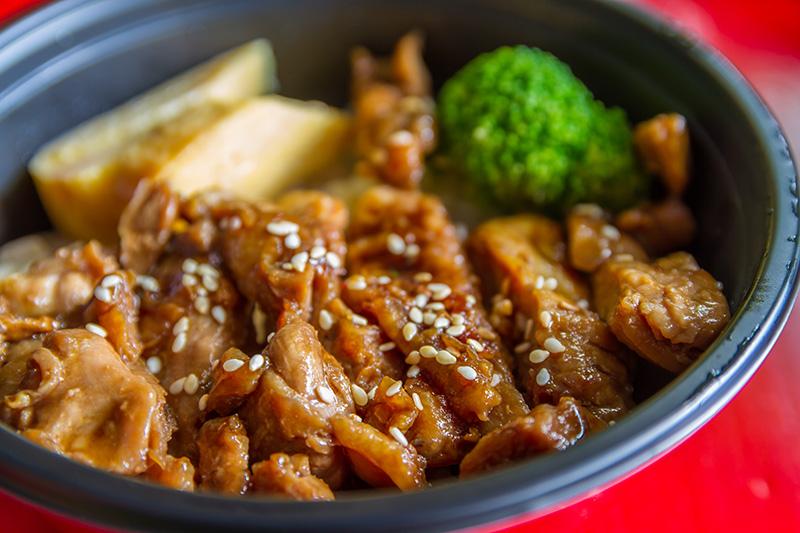More Health and Nutrition Bites
Related
Fast foods not just bigger
People are eating far more fast food now than they did in 1978, when an estimated 4% of all calories consumed in the United States was fast food. Now that number is 11%, and 40% is the most recent estimate I've seen of the percentage of Americans over 20 who are obese.
Putting calories and sodium information on restaurant menus may backfire
For years chefs have resisted marking certain menu items as "healthy:" they know that it's the kiss of death. Nobody will order it. That may be changing, but the fact still remains that many people believe that healthy food just can't taste good.
Fast Food and Depression
There's been a fair amount of research into depression and diet, mostly focusing on the Mediterranean Diet in general, one component of it (olive oil) or looking at specific nutrients like omega-3 fatty acids and B vitamins. All of these are associated with a reduced risk of depression.
Health & Nutrition Bites
Get the latest health and diet news - along with what you can do about it - sent to your Inbox once a week. Get Dr. Gourmet's Health and Nutrition Bites sent to you via email. Sign up now!
Majority of restaurant meals do not meet AHA criteria

Over the last couple of months I've been updating our lists of healthier choices at fast food and chain restaurants. If you've been reading those columns, it will be no surprise to you that foods from chain restaurants, whether they are full-service restaurants, fast casual restaurants, or fast food restaurants, simply aren't very good for you in general.
A look at the advertising from chain, fast casual, and even some fast food restaurants might lead you to believe that their foods are pretty healthy.
This is, however, probably less true than the companies would have you believe, but in the interest of accuracy, a team of researchers recently assessed the quality of restaurant meals with the most recent data available (J Acad Nutr Diet 2020; 120(8):P1359-1367)
The online database, MenuStat, includes nutrition information from the 100 restaurant chains with the highest sales. The information is drawn from the companies' own published information and at the time of analysis was current to 2017.
But how to tell if a particular food or food combination (for example, a main course and a side dish) was healthy? The USDA's Healthy Eating Index or the Dietary Guidelines for Americans focuses on amounts of food types (for example, how many cups of vegetables does a meal contain?) or patterns of eating that focus on more long-term intake.
The American Heart Association (AHA) has a "Heart-Check" meal certification criteria that focuses on 6 "nutrients to limit," including calories; total, saturated, and trans fats; cholesterol, and sodium, and six "beneficial" nutrients, that include protein and fiber (the only two beneficial nutrients listed in the MenuStat database).
Thus the authors could characterize an entree, side dishes, and meals (an entree plus one side dish) as either meeting the AHA criteria (being under the targets set for "nutrients to limit" as well as being over the criteria for at least one "beneficial" nutrient) or not meeting the criteria.
The authors excluded food items that were termed "appetizers" or were clearly intended to be shared by multiple persons as well as foods with values that were unlikely to be accurate (such as cheese fries with zero calories). They then created combinations of every entree and every side offered at each of 73 restaurants, which included nearly 176,000 meal combinations at 35 fast-food restaurants, 29 full-service restaurants, and 9 fast-casual restaurants, analyzing every combination for its adherence to the AHA criteria.
The authors report, "less than 10% of meals at each restaurant service type met all seven AHA criteria" and "less than one-fifth of restaurant meals met the AHA saturated fat (18%) and sodium (19%) criteria." The upper limit for saturated fat is 5 grams, while the upper limit for sodium is 960 milligrams. This means that over 80% of restaurant meals contained more than 960 milligrams of sodium.
Somewhat encouraging is the fact that 24% of fast-casual restaurant meals met 5-6 out of 7 of the AHA criteria, while about 20% of meals at all other restaurants did the same.
What this means for you
I can't emphasize this enough: if you are going to eat out, do your homework before you get there. Restaurants with more than 20 locations are required by law to post nutrition information for their food, so make use of that information and know what your best options are before you walk in the door (or drive up to the window).
You can see my choices for the healthiest options at many chain restaurants here at DrGourmet.com.
First posted: September 9, 2020

